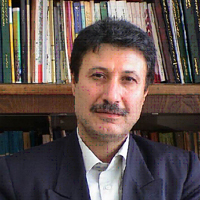Explaining the Role of Ethnic Groups in the Physical-Spatial Development of Multiethnic Cities (Case Study: Dogonbadan City)
Cities are facing problems such as uncoordinated physical-spatial structure and lack of urban identity due to reasons such as rapid population growth, migration of ethnic groups with different cultures, lack of plan and efficient management. However, the phenomenon of ethnic migration is one of the most important factors whose influence on the formation of the uncoordinated physical-spatial development of the city is quite evident. In other words, the adaptation of the geography of deprivation to the geography of ethnicity, ideologies, colonialism, and also foreign interventions or the use of other tools. They have played an important role in the ethnicization of societies. Due to its geographical and economic location, the city of Dogonbadan is one of the most important oil and immigrant cities that the existence of different ethnic groups such as Turks, Lors, Kurds, etc. in the structure of the city in terms of spatial-physical, economic dimensions. As well as cresting a social multiplicity. In this regard, in this study, the main purpose is to explain the role of ethnic groups in the physical-spatial development of multiethnic cities (Dogonbadan city).
This article is descriptive-analytical and developmental-applicative in terms of purpose and nature. In this research, in order to formulate the generalities of the research from the library study, by examining the opinions, ideas, views related to the approach of physical-spatial structure and ethnic groups. SPSS software and factor analysis method have been used in order to identify the influence of the influencing factors on the integrated physical-spatial structure of Dogonbadan city.
Economic factors have had the greatest impact on the formation of the current pattern of development of Dogonbadan city, witnessing the instability of the city development model. Also, the extracted factors were clean and livable city, ethnic city, community city, body city and finally economy city, respectively, in terms of content and according to the review of theoretical texts were closely related to each other criteria and scope of study naming Has been a greater impact on the emergence and development of neighborhoods in the city of Dogonbadan.
Multi-ethnic cities are the centers of identity of different ethnic groups with certain characteristics. It can be said that these cities were once villages that were the place of settlement of tribes and nomads based on their potentials and characteristics, and with the passage of time, they became multi-ethnic cities. Therefore, these cities have a specific physical-spatial, socio-cultural and economic structure, and based on the knowledge of the characteristics of each of these structures, it is possible to explain the urban infrastructure in a balanced and sustainable manner for the settlement of each ethnic group. Also, by recognizing and paying attention to the socio-cultural structure of different ethnic groups, we can define a basis for creating a sustainable economy for different ethnic groups based on their characteristics.
-
Examining the Compatibility of Green Infrastructure with Urban Land Use, Case Study: Abbasabad Lands of Tehran
Sara Allah Gholipour, *
Journal of Urban Ecology Researches, -
Territorial Behavior of Residents in Marginalized Areas: Analyzing Its Impact on Housing Patterns (Case Study: Banbor, Ban Barz, Sabzi Abad Neighborhoods in Ilam Province)
Mahvash Mirzabeygi, Sara Jalalian *, Omid Dejdar,
Journal of Urban Peripheral Development, -
A Comparative Study of Population Growth Indicators in Iranian Cities and Their Geographical Neighbors
Keramatolah Ziari *, Samin Yousefi
Journal of Urban Economics, -
Towards an institutionalist conceptual model on the management of disasters and natural disasters with emphasis on urban floods
Sepideh Sadat Hosseini Rostami, *, Hossein Zabihi
Urban Planning Knowledge,




